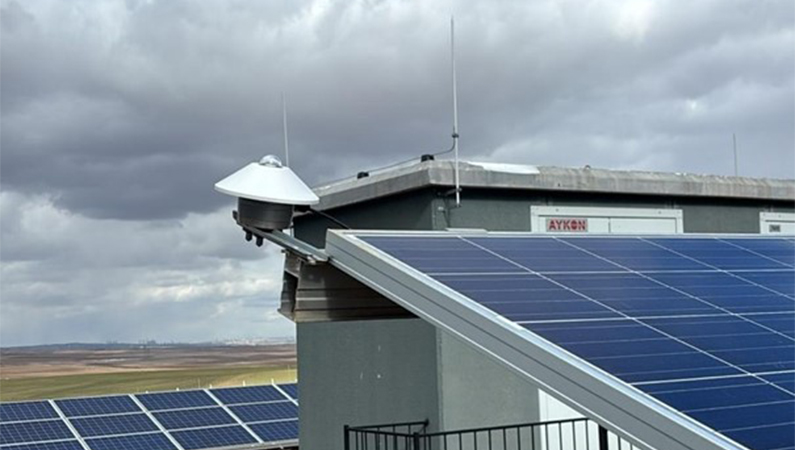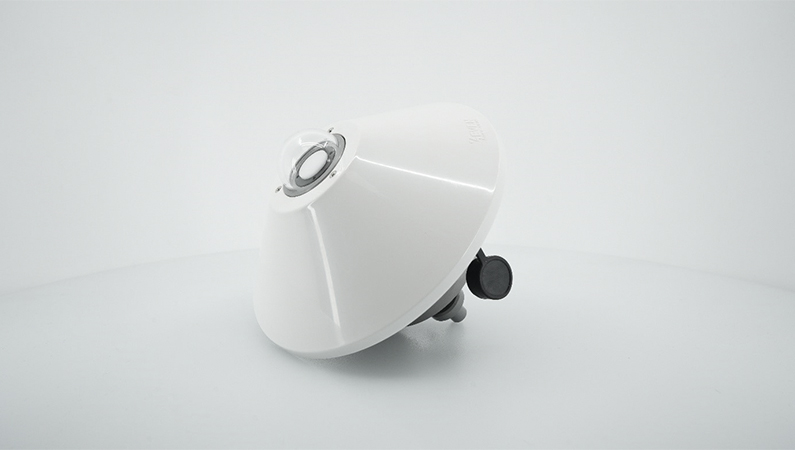Your cart is currently empty!
Next-Generation Thermopile Pyranometer Technology vs. Traditional Pyranometers

Thermopile pyranometers are precision instruments used to measure solar radiation and play a crucial role in meteorology, climate research, and solar energy systems. While traditional pyranometers typically feature a black carbon-coated surface and a double-dome glass design, the next-generation SEVEN Thermopile Pyranometers utilize a white quartz diffuser and a single-dome glass design, representing a significant technological advancement.
Next-Generation Thermopile Pyranometer: White Quartz Diffuser and Single-Dome Glass Technology

In traditional pyranometers, a light-absorbing black carbon surface and a double-dome glass design are used. Black carbon offers broad spectral sensitivity, absorbing radiation in the 300 nm – 2800 nm range.
Advantages of the black carbon surface and double-dome design:
- Thermal Stability: Provides good insulation against external influences.
- Protection from Condensation and Contamination: The inner dome prevents condensation and dirt on the outer glass from reaching the thermopile.
Disadvantages of traditional pyranometer:
- Internal Reflections and Optical Losses: Light refracts between two glass surfaces, causing optical losses.
- Delayed Thermal Stabilization: Double layers require more time to reach thermal equilibrium.
- Higher Production and Maintenance Costs: The dual-dome design is more complex and requires more frequent maintenance.
- Costly Calibration: These devices typically require recalibration every 2 years.
<H2> Next-Generation Thermopile Pyranometer: White Quartz Diffuser and Single-Dome Glass Technology
In the new SEVEN 3S-TP-MB-A Pyranometers, significant innovations have been made to the optical components used in traditional pyranometers. Instead of black carbon surfaces, a white quartz diffuser is used; and the double-dome is replaced with a single-dome glass, improving measurement precision and significantly shortening the response time.
Advantages of the SEVEN Next-Generation Thermopile Pyranometer:

- Broad Spectral Range: High transmittance in the 280 nm – 2800 nm range allows for more accurate UV and infrared radiation measurements.
- Ultra-Fast Response Time (0.5 seconds): Captures rapid changes in radiation that traditional pyranometers might miss.
- Very High Sensor Stability: Requires recalibration only every 5 years, reducing labor and logistical costs for solar energy projects.
- More Homogeneous Measurement: The white quartz diffuser evenly distributes light onto the thermopile, enhancing measurement accuracy.
- High Durability: Offers greater resistance to UV radiation and retains its optical properties over time.
- Low Zero Drift Even Without Ventilation: Enables highly accurate measurements during early mornings and late evenings, particularly under clear sky conditions.
- Low Maintenance and Long Life: The single-dome design minimizes the need for cleaning and upkeep.
- Faster Thermal Stabilization: Reaches thermal balance faster than double-dome counterparts.
Comparison of Traditional vs. Next-Generation Pyranometers
| Black Carbon and Double-Dome Glass Pyranometer | White Quartz Diffuser and Single-Dome Glass Thermopile Pyranometer | |
| Spectral Range | 300 nm – 2800 nm | 280 nm – 2800 nm |
| Measurement Accuracy | Medium | High |
| Response Time | Medium | Fast |
| Light Distribution | Direct Absorption | Homogeneous Distribution |
| Internal Reflections | High | Low |
| Optical Losses | High | Very Low |
| Thermal Stabilization | Slow | Fast |
| UV Resistance | Medium | High |
| Calibration Frequency | Frequent (Every 2 Years) | Low (Every 5 Years) |
| Production Cost | Higher | Lower |
Next-generation pyranometers with white quartz diffusers and single-dome glass clearly offer numerous advantages over traditional designs with black carbon surfaces and double-dome glass. These benefits include faster response time, less frequent recalibration, reduced optical losses, more uniform light distribution, quicker thermal equilibrium, and minimal maintenance needs.
As such, SEVEN’s Thermopile Pyranometers are ideal for use in photovoltaic systems, meteorology and climate research, precision solar radiation measurement, and scientific applications. This new SEVEN technology represents a major step forward in terms of accuracy, durability, and economic efficiency. The transition from traditional to next-generation pyranometers is expected to accelerate in the coming years, and SEVEN Sensor Solution has already taken the lead in this transformation.
If you would like to take a look at the SEVEN Pyranometer, visit: “https://www.sevensensor.com/pyranometers“